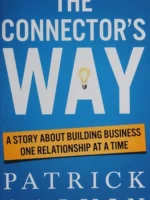The Tipping Point Review
The Tipping Point by Malcolm Gladwell explores how small changes trigger big social shifts. It packages diffusion into stories: contagion spreads when the right people, messages, and contexts align.
Overview
Three levers: connectors, mavens, and salesmen as spreaders; stickiness of messages; power of context including networks and environments. Case studies span fashion, crime drops, product uptake, and public health.
Summary
Gladwell shows how influencers and sticky ideas interact with social structures. Minor environmental tweaks can flip behavior at scale. He argues for targeted interventions over blunt force—identify niches where leverage is high.
Authors
Malcolm Gladwell writes as a storyteller synthesizing sociology and psychology into memorable narratives.
Key Themes
Network structure matters; message design matters; context amplifies or dampens diffusion; nonlinearity of social change.
Strengths and Weaknesses
Strengths: vivid framing, accessible heuristics, and actionable intuition for campaigns. Weaknesses: selective evidence and fragile replication for some cases. Treat as hypotheses, not law.
Target Audience
Marketers, policy teams, product managers, organizers, and educators planning behavior change.
Favorite Ideas
Stickiness testing; small world reach via connectors; context tweaks as low cost levers.
Takeaways
Design diffusion. Find the right carriers, craft sticky messages, and engineer contexts where small pushes cascade into large effects.









